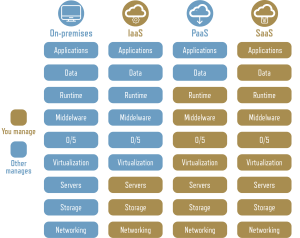Why you should consider a career in Cloud Computing
on 18 July 2022 for GraduatesThinking of starting your career in Cloud Computing? Smart choice. As we’re still in the early days of Cloud, the opportunities are endless, always evolving and available across every industry. So, you’re almost guaranteed an exciting and rewarding future.
Cloud technologies evolve rapidly. Some are led by global providers such as Microsoft, with their Microsoft Azure platform. Others run on esteemed niche technologies such as Kubernetes, Kafka or Terraform. All this means is that, if you’re passionate about innovation, technology and disruption, Cloud Computing is the way to go. Your path to success is wide open!
Already convinced? We’re launching a 9-week international cloud traineeship in collaboration with Belfius, more info right here.
Rising demand: the Gartner Report
Not yet convinced? We’re here to change your mind. Did you know that the Gartner Predicts report on Cloud estimates that by 2025, 95% of new digital workloads will be deployed on cloud-native platforms? In 2021, this was only 30%. In other words: Cloud is on the rise! As a result, the IT industry will see a sudden demand for professionals skilled in Cloud Computing. Why not get a head start and become an early adopter by enrolling in our Cloud program today?
Curious to learn how a career in cloud might look like? In another blogpost, we explained 8 cloud roles so go and have a look.
Here are the key takeaways of the Gartner Report on Cloud Computing:
- Global end-user spending on public cloud services was set to reach $474 billion in 2022. In April of 2022, as demand increased, this number had already been readjusted to $494 billion, indicating that the growth in cloud solution sales is even bigger than anticipated. To compare: in 2021, this number was $410 billion. According to Gartner’s estimations, sales in Cloud will rise to almost $600 billion by the end of 2023.
- More than 85% of organizations will embrace a cloud-first principle by 2025.
- Companies will not be able to fully execute their digital strategies without the use of cloud-native architectures and Cloud Computing experts. According to Milind Govekar, distinguished vice president at Gartner, “there is no business strategy without a cloud strategy.”
- By 2025, 95% of new digital workloads will be deployed on cloud-native platforms, against 30% in 2021.
Saas, PaaS, or IaaS?
The thing about Cloud, is that everything becomes a service. Typically, an organization only pays for the cloud services they use. This helps to lower operating costs, run infrastructure more efficiently and scale with changing needs.
The most well-known cloud services are Software-as-a-Service (SaaS), Infrastructure-as-a-Service (IaaS), and Platform-as-a-Service (PaaS). But there are many more: Data-as-a-Service, Desktop-as-a-Service (confusingly both shorthanded as DaaS),Business Process-as-a-Service (BPaaS), Database Platform-as-a-Service (DbPaaS), …
Basically, with on-premise solutions, you manage everything yourself. When you switch to cloud solutions, there are degrees in how much you manage in-house and how much your service provider manages for you. We’ll briefly expand on the three most common acronyms.
- SaaS: Software-as-a-Service is a type of service that is delivered over the web and intended for the end-user. Instead of downloading software to your computer, you work online. This can be subscription-based or pay-as-you-go and usually includes online data storage.
Examples include Dropbox and Salesforce. - PaaS: Platform-as-a-Service. This service is similar to SaaS, except that instead of offering a service over the web, it offers users a platform to create a software program. Users can take advantage of the existing tools to develop and manage applications.
Examples include Microsoft Azure and OpenShift. - IaaS: Infrastructure-as-a-Service is a type of service that provides users with an infrastructure system on demand. It gives users access to data storage and the ability to access servers.
Examples include Amazon Web Services (AWS) and DigitalOcean.

Conclusion
Deploying workloads on cloud-native platforms requires an entirely different skillset than companies usually have inhouse today. A huge increase in demand of cloud professionals is on the horizon. If you acquire these skills now, you’ll soon be in high demand in the job market! We offer a Cloud Program that teaches you all the fundamentals of Cloud, preparing you for your first job in the Cloud. Where you go from there, is up to you. Since we’re still in the early days of Cloud Computing, we’re sure many exciting opportunities are ahead for those chasing a career in the Cloud!
About Exellys
Exellys is a Tech Talent Incubator. We match ambitious companies with the finest tech talent. Are you ready to drive the innovations of tomorrow? Ready to make an impact and become a future-fit digital leader?
Whether you are a graduate or (young) professional, Exellys will unlock your full potential by guiding you to a challenging work environment that perfectly matches your personality, expectations and ambitions.
On top of that, you are enrolled in one of our very own training and coaching programs (based on your personal and professional ambition and experience). This means that, while working as an Exellys consultant, we are helping you to bridge your ambition to excellence.
Through intensive training and coaching, you’ll gain the essential skills, competencies and knowledge necessary to become the highly effective professional you aim to be. Become an Exellyst and get in touch with us today!






